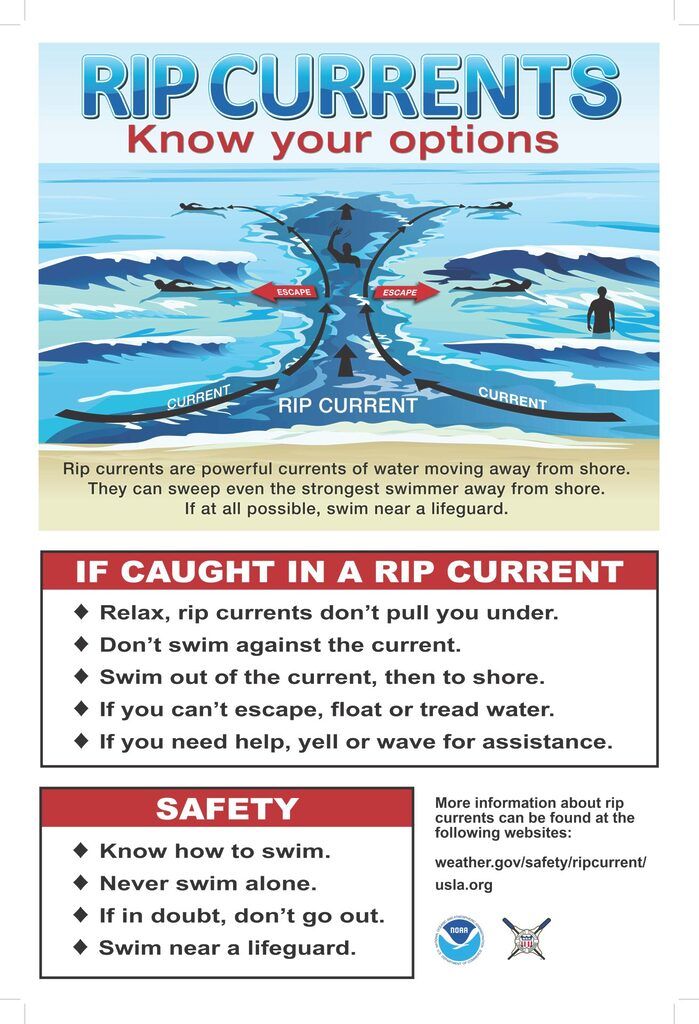There are few things better than a day at the beach. With the sun shining, birds flying overhead, and waves pounding against the shore, it is possible to forget that the ocean is a powerful force. That’s why it must always be respected.
When visiting the ocean, the first thing to remember is that there are no lifeguards on Edisto Beach. All swimming is done at one’s own risk. There are life preservers available at each beach access to assist anyone in danger.
As for overall ocean safety, while it’s important to always swim with a partner, never go in too deep, and stay out of the water when the current is strong and during a storm. But if there’s one thing to remember above all else it’s that one of the most dangerous aspects to swimming in the ocean involves rip currents.
Rip currents are fast moving, narrow channels of water. They flow out to sea and run perpendicular to the shore. Getting caught in a rip current can be fatal. These currents flow up to 5 mph and even the strongest swimmers are unable to battle against them. Fighting the current causes swimmers to become exhausted quickly and they run a real risk of drowning.
To escape the power of a rip current, the important thing to remember is to stay calm and swim parallel to shore. Swimming parallel helps swimmers break free from the grip of the rip current and make it back into safer waters. Once out of the rip current, a swimmer can make it back to the shore.
An important thing to remember is that saving someone who is stuck in a rip current is possible, but no one should attempt to swim after someone trapped in the current. This could prove detrimental to everyone involved. Instead, call 911 and wait for help to arrive.
Important Info about Rip Currents:
- Rip currents move at up to eight feet per second.
- Life guards rescue thousands of people each year from rip currents; more than 100 people die each year after being trapped in a rip current.
- A rip tide and rip current are two different things. Rip tides are associated with the swift. movement of tidal water through inlets and the mouths of harbors and estuaries.
- Rip currents form at breaks in sandbars and at low spots near sandbars or the coast.
- Rip currents can be several yards wide or very narrow.
- If you can’t escape the rip current, float or tread water until help arrive.











